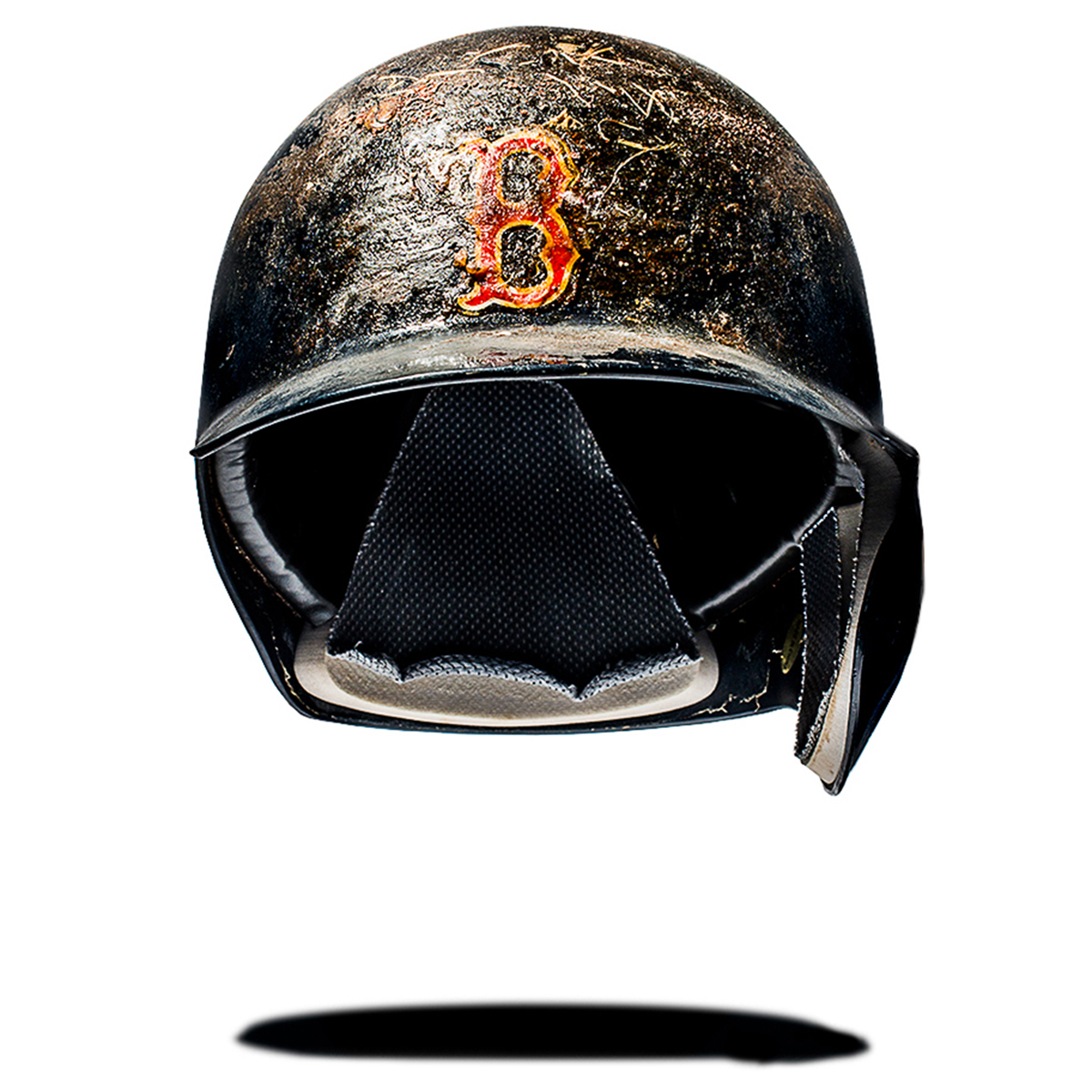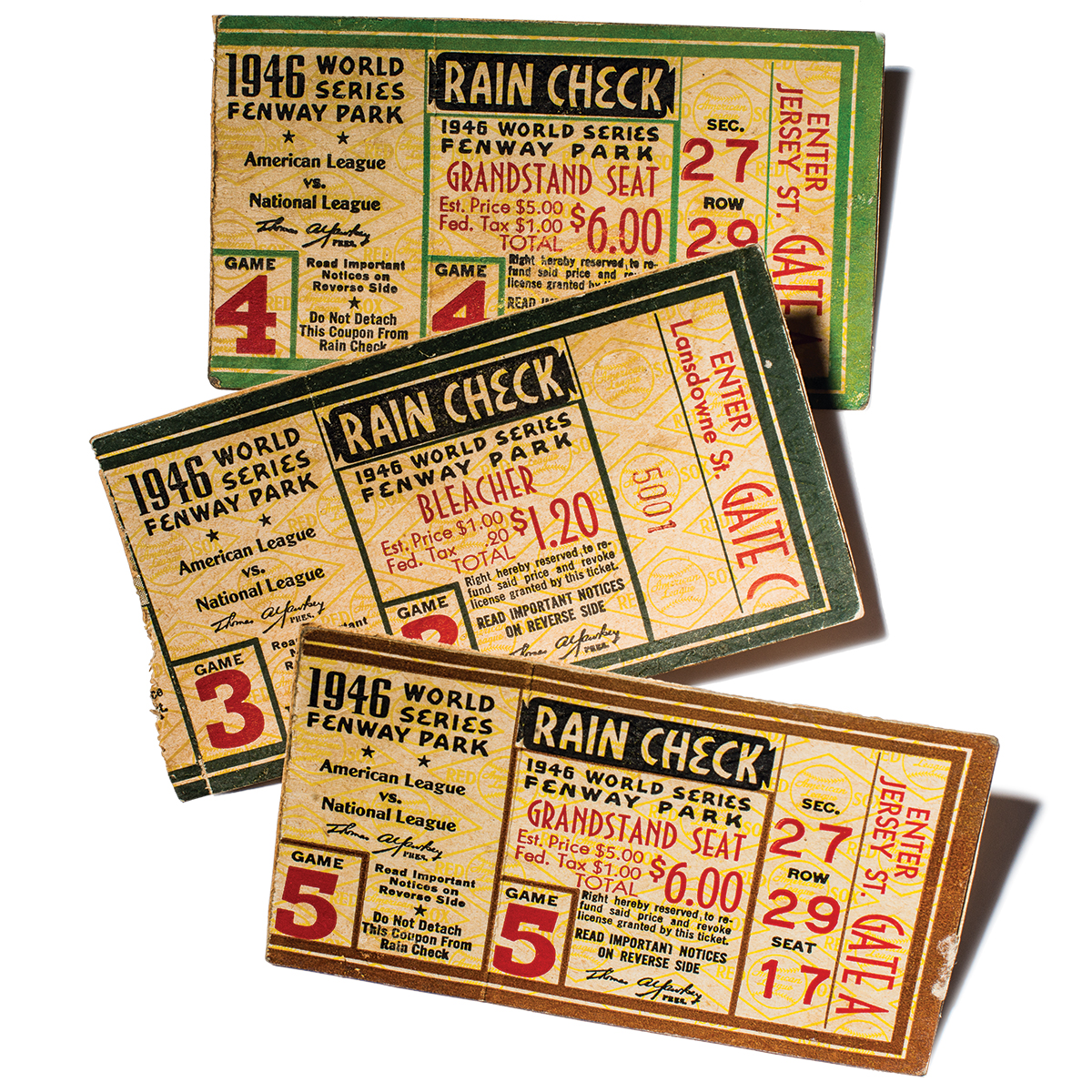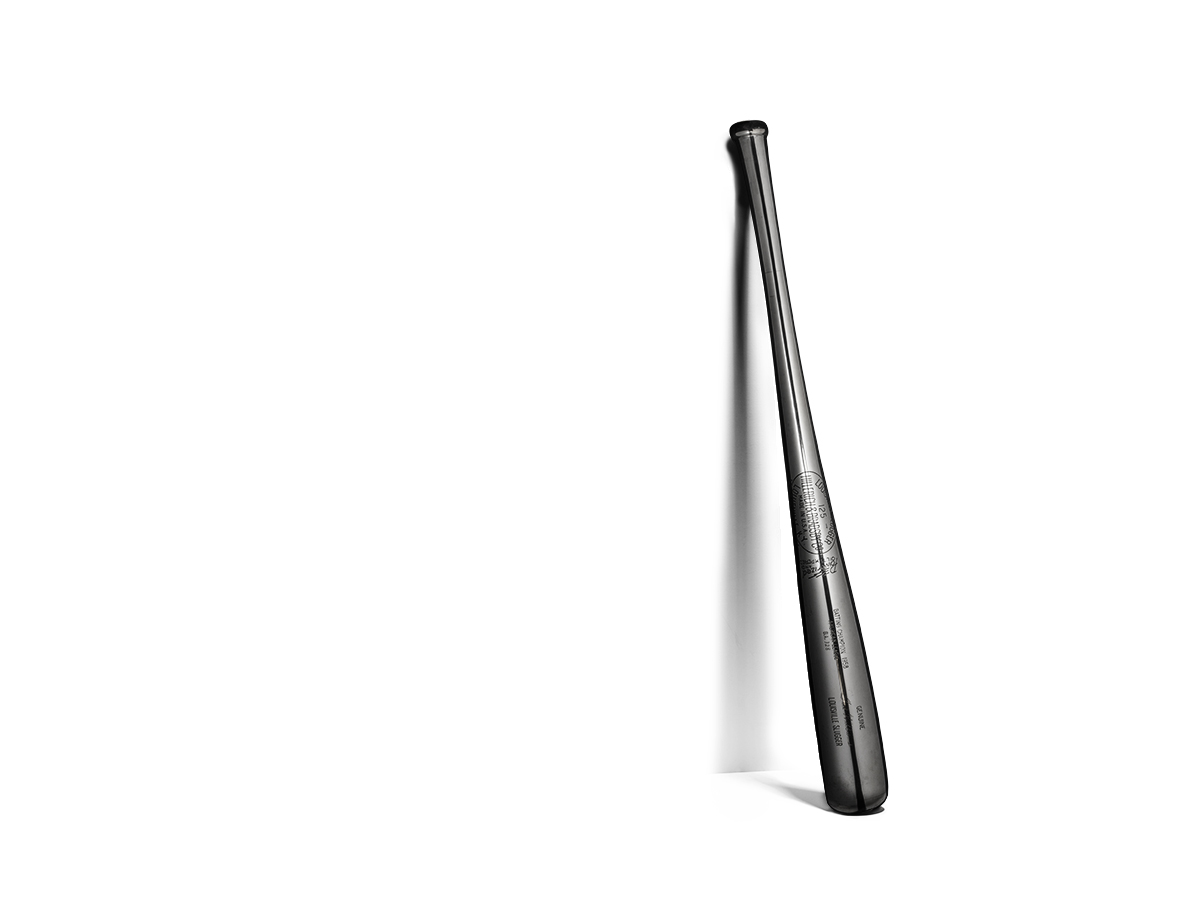Four Historic Red Sox Artifacts You Can See at Fenway Park

Photograph by Toan Trinh
It’s hard to appreciate the history in Fenway Park when you’re barreling through the crowds with a beer in one hand and a sausage in the other trying to make it to your seat. But nestled in display cases throughout the park is a remarkable assortment of artifacts that weave together both the story of the team and the story of the city.
With Spring Training in full swing, it seemed fitting to get a closer look at these fine specimens, so we linked up with the folks at Fenway Park Living Museum Fund, which manages more than 170,000 Red Sox-related artifacts. More than 200 of those are on display in the park on any given day.
Here are a few of our favorites, and the stories behind them.

Photograph by Toan Trinh
1946 World Series Tickets
The year was 1946. World War II had just ended, and the Red Sox were suddenly stacked with veterans: Johnny Pesky from, the Navy; Ted Williams, from the Marines; Dom DiMaggio, from the Coast Guard; and Bobby Doerr, from the Army.
The heavyweight roster started hot, winning 15 straight games in April and May, and at one point hitting 32–9. But as the 1946 Sox got closer to the World Series, the Curse reared its ugly head. DiMaggio jammed his thumb and Williams took a stinging pitch to his elbow. Although the squad was ailing, they managed to reach Game 7 against the St. Louis Cardinals. In the eighth inning they crumbled, and the rest—including these World Series tickets—was history.
Seventy years on, can we draw any parallels to the 2016 clubhouse? “It’s really more of a contrast,” says team historian Gordon Edes. Ted Williams, the greatest player in Red Sox history, never won a World Series. In contrast, David Ortiz, the greatest Sox slugger since, has three rings and is looking to add another as he readies for retirement. “David would like nothing better than a fourth crack at something Ted never got,” Edes says.

Photograph by Toan Trinh
Ted Williams’ 1957 Silver Bat
To define Ted Williams’ legacy in a single artifact is no easy task, but this 1957 Silver Bat does justice to the legendary slugger’s remarkable saga.
“In ’57, Ted is 38 years old, he’s already done two military tours by that time, and he ends up hitting .388. The only time he hit for a higher average in his career is when he was .406 in 1941,” Edes says. “It goes without saying but I’m going to say it—this was easily the highest batting average of any player 38 years old or older.”
If that’s not impressive enough, Edes points out that only eight players 30 years old or older have hit for a higher average in a single season, and seven of them are in the Hall of Fame. “It’s just nuts.”

Photograph by Toan Trinh
Roger Clemens’ 20k Ball
Roger Clemens was in the zone. It was April 29, 1986, and a lackluster Seattle Mariners squad had come to Fenway. Unbeknownst to them, they’d fall into the record books on the wrong side of history as Clemens mowed down batter after batter while working his way to 20 strikeouts in nine innings.
“One of the striking things is there was a chance that as Clemens is making history, he could have lost that game. It was scoreless through six innings,” Edes says. In the top of the seventh Seattle hit a homerun and took the lead. “Here’s Clemens striking out the world and he’s losing one-nothing.”
The game turned around when Dwight Evans belted out a three-run shot in the bottom of the seventh that pushed the Sox to victory.
Up until that point, no one had ever struck out 20 batters in a nine-inning game. Ten years later, in 1996, Clemens did it again against the Tigers. The only other pitchers to achieve the feat are Randy Johnson and Kerry Wood. But they only did it once.

Photograph by Toan Trinh
Manny Ramirez’s Dirty Helmet
There’s no better visual representation of Manny being Manny than his pine tar-slathered helmet.
“It kind of encapsulates the era of the Idiots in 2004,” Edes says, noting that league brass made a stink of pine tar that season and fined Nomar Garciaparra for obscuring the MLB logo on his helmet. “When Trot Nixon heard about this—remember, he was known as the Dirt Dog—he just went ballistic.”
The way Edes tells it, Manny was the godfather of pine tar. He’d stockpile it on his helmet so he could dab on a bit more to the handle of the bat as needed. Nixon and company picked up on the trick, and it quickly became just another part of the Idiots culture that America fell in love with.
*This article was updated on March 10 to clarify Ted Williams military service.


